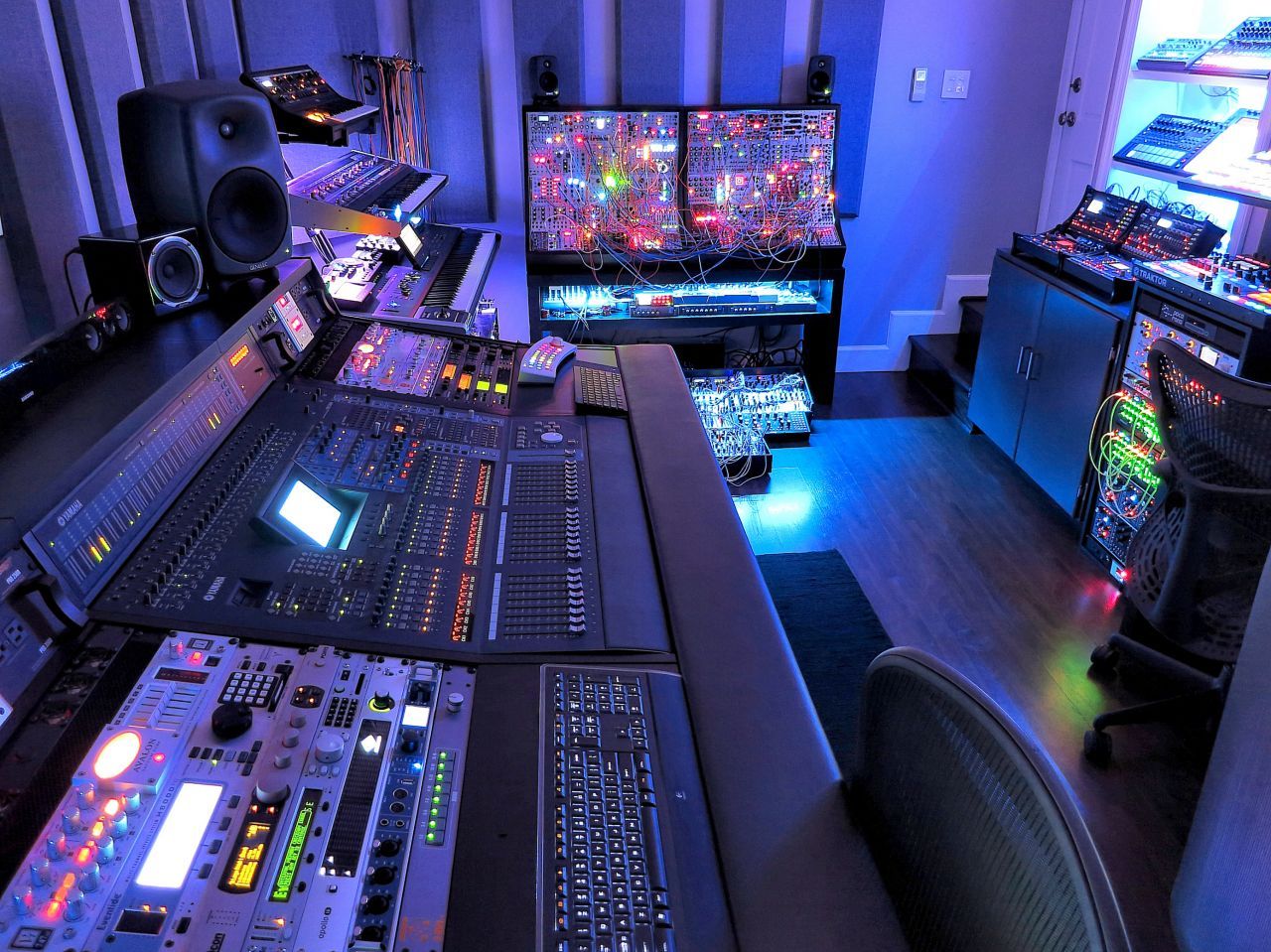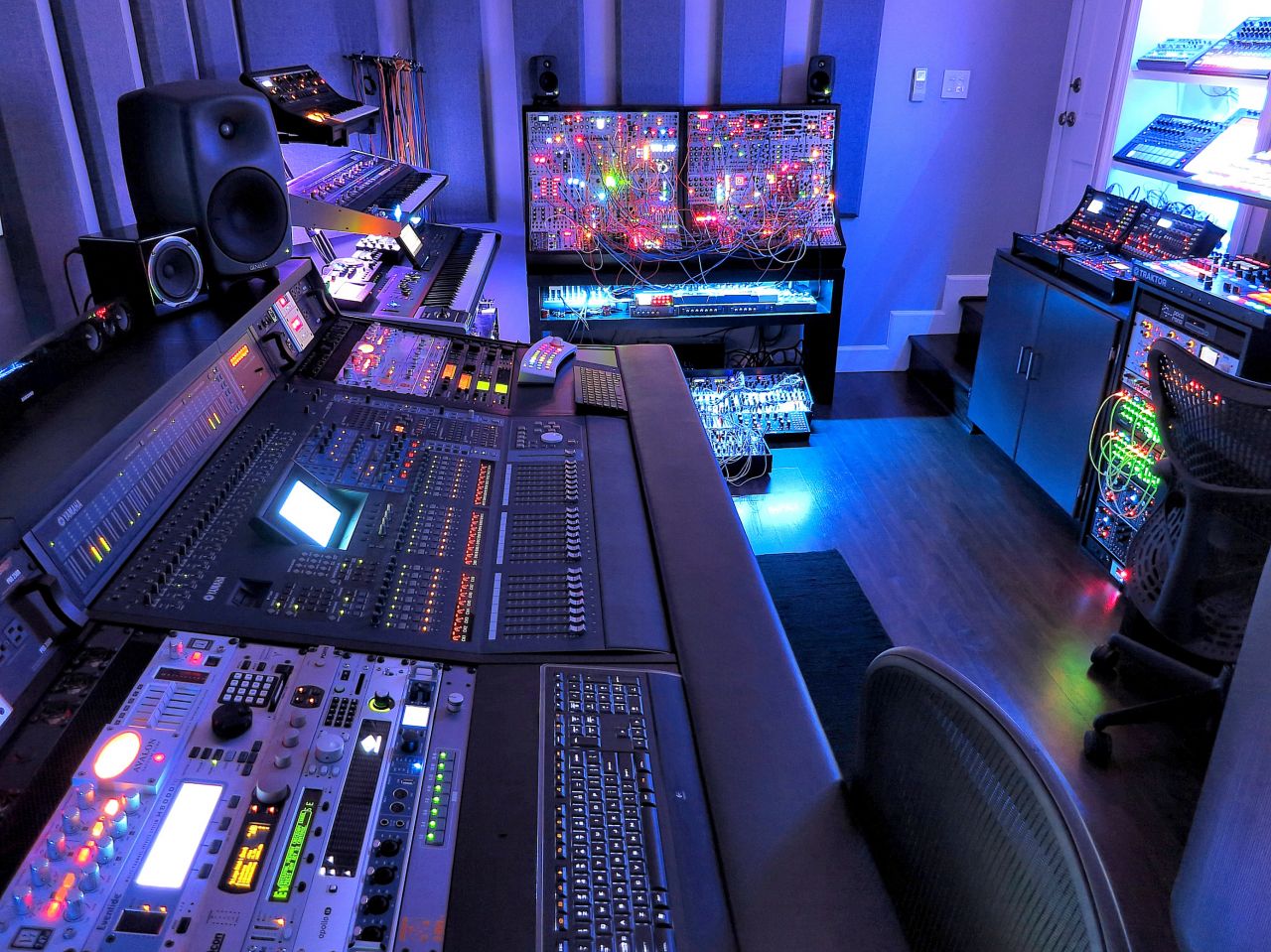MIDI Artist Interview with Richard Devine and Michael Loh

TMA:
When were you first introduced to MIDI?
Richard Devine:
It was during high school when I was about 16 years old so maybe 1991. I had started buying a bunch of analog and digital keyboards at second hand shops. I had Jupiter 6 (one of the two first instruments to have MIDI), a Roland TR909, and I noticed that it had these jacks on the back- MIDI In and Out,
I started researching ways to connect things together. I initially started out with CV/gate connections on my Arp-2600. I began experimenting with CV and controlling the Arp-2600 with the Arp sequencer. Learning the basics about sequencing. Shortly after this I was decided to integrate MIDI into my workflow, and began researching how build my setup around a MIDI sequencer. I got a computer, and also bought two Alesis MMT8 midi sequencers. I spent several months learning this setup, and discovered that MIDI was going to play a big role in my musical productions.
At that time there wasn’t a big Internet presence. So I would read magazines like Future Music and Electronic Musician and they used cover a lot of midi setups of artists that I was heavily following at the time. I learned a lot about how to work with bigger MIDI setups, and soon after this bought my first MIDI interface by MIDIman.
TMA:
You mentioned CV and Gate, it is amazing that there was never a standard for such a simple interface protocol, There were two ways to do it and they both still exist. How important is it to you that MIDI products from 20 years still work with your newer gear?
Richard Devine:
For my work in particular it’s extremely important, I need access to both old and new technology at the drop of a hat. I never know what the client will ask for. I do a lot editing with piano roll editor, and MIDI CC automation. Almost every job that I have worked on has used MIDI extensively, in controlling Virtual Instruments or hardware units in the studio. It’s become the central communication system to all my instruments.
I don’t know what I’d do if it went away. Without MIDI I’d be totally screwed.
by Richard Devine
Sometimes I have to turn in stuff within an hour. I’m working with Google on a pretty hefty virtual reality project and the turn around times and deadlines are incredibly tight and hectic. So in designing my studio I have two setups, the mixing area and editing station. Both areas are completely MIDI’ed together and ready to go. Everything is always armed and ready to record.
I’m really excited because after this Google project is finished I am going to rewire the entire studio and use the new iConnectivity MIO10 systems. I have Cat5 wiring on both the rear and back walls of my studio. I use them now for connectivity to my digital console and to my personal cloud storage work drives. I am going to make the leap to network MIDI, and use the Ethernet connections on my Mac Pro and Macbook Pro. The goal is to have either computer be the controller of all my MIDI devices. With the built in software I can map out different port configurations/filtering very quickly and also store and recall presets. I thank god a company like iConnectivity has stayed up with the latest trends in technology. I haven’t found any other company that is currently addressing MIDI interface design with more modern computers and hardware.
It’s great time to making music with MIDI now.
by Richard Devine
Article Update
Our Friends at Synthtopia let us know that Richard created a free sample library based on samples of the Mysterious Ringing Rocks of Montana.
The Ringing Rocks are a unique geological formation that features rocks that ring musically, when taped with a hammer. They are natural lithophones – instruments that are struck.

Richard Devine Went To Montana And Hit Rocks With A Hammer To Bring You This Free Sample Library – Synthtopia
TMA:
What was motivation for starting iConnectivity.
Michael Loh Founder and CTO at iConnectivity:
A little over 7 years, when we started we were going to be gas and oil services company. The original idea was allow people to use a iPhone to take data from oil fields. We pivoted and thought about products and product that would connect to an iPhone. One of the people in the company was a professional musician. So we decided would be a good place to start because MIDI is from an engineering point of view it’s pretty simple. We ended up having a distribution channel and manufacturing in the music channel so we decided to stay. It’s been a constant evolution of building our brand. Last year at NAMM was the first time that we really started to have brand recognition where people would come to our booth at NAMM and say “hey, we know you and you can solve our problems.”
We think the new MIO series is really the culmination of our goal of developing the most sophisticated MIDI devices on the planet.
We sent Richard two MIO10s because you can connect two MIO10s together and control all the mapping and filtering for both.
All our products have our core MIDI Data management system. One of the advantages of that system is we can send System Exclusive messages to change all the channel and port mappings and filtering. It’s amazing because we use MIDI to control the MIDI managment in our devices so our products are completely MIDI centric.
Another advantage is how efficient MIDI is. In our MIDI management system we process everything within 200 nanoseconds.
Check out this video about using the iOS app iMIDIPatchbay with iConnectivity devices. It’s got lots of great tips about MIDI routing.

iConnectivity mio Series USB/MIDI Interfaces Overview by Sweetwater – YouTube


